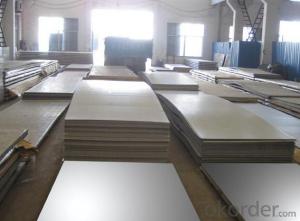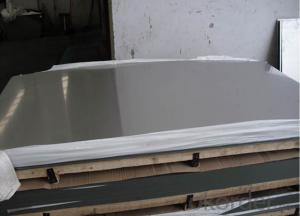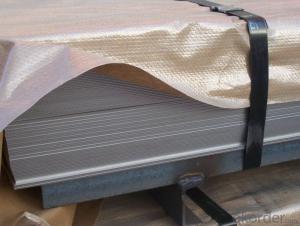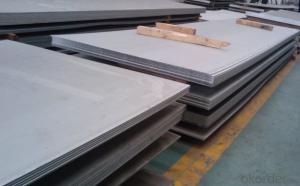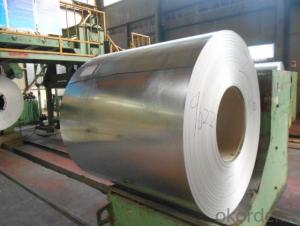Stainless Steel Sheet Food with Low Price
- Loading Port:
- Shanghai
- Payment Terms:
- TT OR LC
- Min Order Qty:
- 10000 m.t.
- Supply Capability:
- 5000000 m.t./month
OKorder Service Pledge
OKorder Financial Service
You Might Also Like
Hot sale stainless steel sheet 201/202/304/304l/316/316l/430 in china alibaba
Product Description
Stainless steel sheet Detailed introduction
Description | steel sheet,hot rolled steel sheet,cold rolled steel sheet, steel sheet,sheet,steel plate |
Standard | ASME, ASTM, EN ,BS,GB,DIN, JIS etc |
Application | Steel sheet applies to construction field, ships building industry, petroleum & chemical industries, war and electricity industries, food processing and medical industry, boiler heat exchanger, machinery and hardware fields. |
Packaging | Standard export sea-worthy packing |
Delivery time | 10-30 days |
Quality | No.1 |
Productivity | 500 tons/Day |
Note | Our company has cooperative relation between the domestic agents. Stainless steel sheet can be made accordingto the customers requirements. Fasten delivery. Quality assured. |
Contacts | If you have any question,please feel free contact me. |
Stainless steel sheet surface finish characteristics
Surface finish | Characteristics and application |
2B | The surface brightness and flatness of no2B is better than no2D. then through a special surface treatment to improve its mechanical properties,No2B could nearly satisfy comprehensive uses. |
No.1 | Polished with abrasive belt of grit#100-#200, have better brightness with discontinuous coarse stria, used as inner and external ornaments for building, electrical appliances and kitchen utensils etc. |
No.4 | Polished with abrasive belt of grit #150-#180,have better brightness with discontinuous coarse stria, but thinner than No3, are used as bathtub buildings inner and external ornaments electrical appliances kitchen utensils and food processing equipment etc. |
HL | Polished with abrasive belt of grit #150-#320 on the NO.4 finish and has continuous streaks, mainly used as buildings ornaments elevators, door of building, frontal plate etc. |
BA | Cold rolled, bright annealed and skin-passed, the product have excellent brightness and good reflexivity like mirror, kitchen apparatus, ornament etc. |
8K | The product have excellent brightness and prefer reflexivity can to be the mirror. |
Application :
•Escalator, Elevator, Doors
•Furniture
•Production tools, Kitchen appliances, freezers, cold rooms
•Auto Parts
•Machinery and Packaging
•Equipment and Medical devices
•Transport system
Product Details:
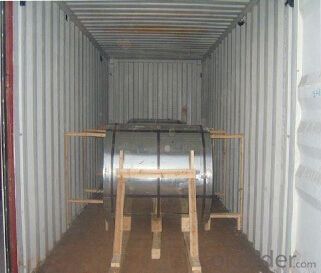
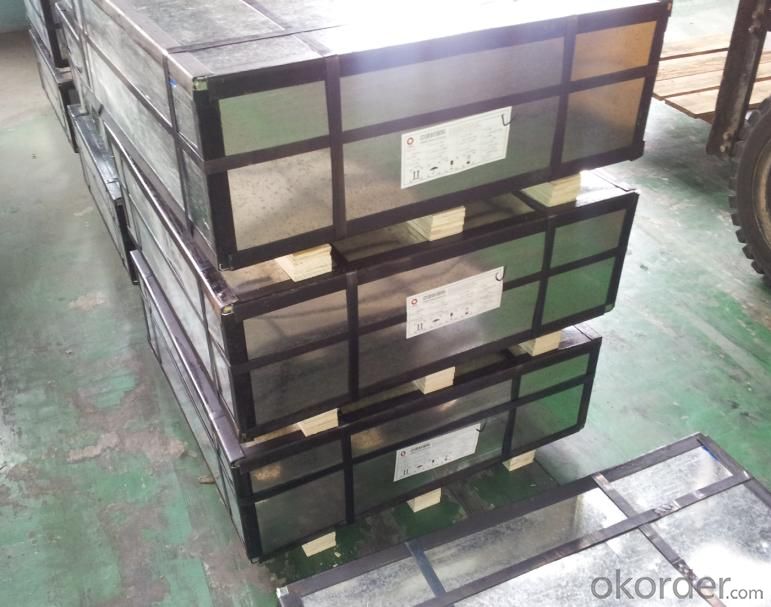
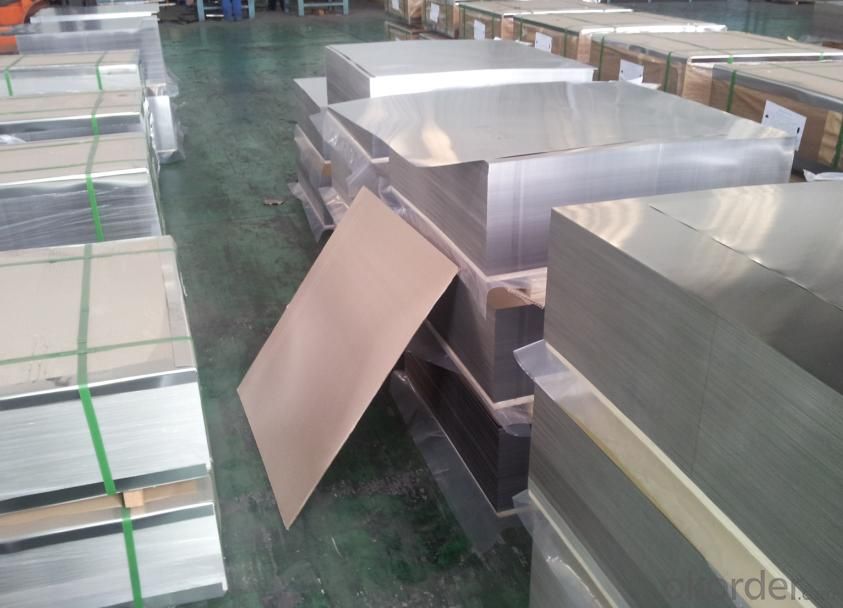
Sandard Seaworth Packing(wooden packing with water proof paper)


If you have any question about stainless steel sheets,donot forget to sending the email to Us! You will get the competitive Price and have a very good experience about the Buying Process! CNBM International Corporation is always your trustful friend!
- Q:How do you clean and maintain stainless steel sheets?
- In order to clean and maintain stainless steel sheets, you will require a few basic supplies. These include a microfiber cloth or soft sponge, mild dish soap or a stainless steel cleaner, warm water, and a towel for drying. Begin by rinsing the stainless steel sheet with warm water to eliminate any loose dirt or grime. Next, gently scrub the surface of the stainless steel sheet using a small amount of mild dish soap applied to the microfiber cloth or sponge. It is important to avoid using abrasive materials or harsh chemicals as these can cause scratches or damage to the stainless steel. After cleaning, make sure to thoroughly rinse the sheet with warm water to remove any remaining soap residue. To prevent water spots, use a clean towel to dry the surface. Always remember to dry the stainless steel sheet after cleaning to prevent the formation of water spots or streaks. If there are stubborn stains or fingerprints that cannot be removed with soap and water, you can employ a stainless steel cleaner that is specifically designed for this purpose. Follow the instructions provided with the cleaner and use a soft cloth to apply it to the sheet. To avoid scratching the surface, wipe in the direction of the grain. Rinse thoroughly and dry as mentioned earlier. To maintain the shine and luster of stainless steel sheets, it is important to refrain from using abrasive cleaners, scouring pads, or steel wool as these can harm the surface. Additionally, avoid using cleaners that contain bleach or chlorine as they can cause discoloration. Regularly cleaning the stainless steel sheets is crucial to prevent the buildup of dirt, grease, or other contaminants that can result in corrosion. For most applications, a weekly cleaning routine should be sufficient, although in high-traffic or heavily used areas, more frequent cleaning may be necessary. In conclusion, the process of cleaning and maintaining stainless steel sheets involves gently scrubbing with mild dish soap or a stainless steel cleaner, rinsing with warm water, and ensuring thorough drying. By following these steps and avoiding abrasive materials, your stainless steel sheets will remain clean, shiny, and in optimal condition for years to come.
- Q:Can stainless steel sheets be used for automotive body panels?
- Yes, stainless steel sheets can be used for automotive body panels. Stainless steel is a popular choice for automotive applications due to its excellent corrosion resistance, high strength, and durability. It can withstand harsh weather conditions, road salts, and other environmental factors without rusting or degrading. Additionally, stainless steel is lightweight, making it ideal for reducing the overall weight of the vehicle and improving fuel efficiency. However, stainless steel can be more expensive compared to other materials, which may affect its widespread use in automotive body panels.
- Q:Can stainless steel sheets be used for food packaging or containers?
- Yes, stainless steel sheets can be used for food packaging or containers. Stainless steel is a safe and hygienic material that is resistant to corrosion, heat, and chemical reactions, making it ideal for storing and transporting food items. Additionally, its durability and easy cleaning properties make it suitable for repeated use in the food industry.
- Q:What are the different types of stainless steel sheet edges available?
- There are several different types of stainless steel sheet edges available, each offering its own unique advantages and characteristics. 1. Mill Edge: This is the standard edge finish produced during the manufacturing process. It has a straight, sharp edge with no additional treatment or finishing. Mill edge stainless steel sheets are commonly used in industrial applications where aesthetics are not a priority. 2. Slit Edge: Slit edge stainless steel sheets are created by cutting the sheet along its length, resulting in a slightly rounded edge. This type of edge is commonly used in applications where safety is a concern, as it reduces the risk of sharp edges causing injury. 3. Sheared Edge: Sheared edge stainless steel sheets are created by cutting the sheet along its width using shearing blades. This process produces a clean, straight edge without any additional finishing. Sheared edge sheets are often used in applications where precise dimensions are required. 4. Deburred Edge: Deburred edge stainless steel sheets have gone through a process to remove any sharp or rough edges, resulting in a smooth and safe edge finish. Deburring is often done using abrasive materials or specialized machinery. These sheets are commonly used in applications where safety and aesthetic appearance are both important. 5. Rolled Edge: Rolled edge stainless steel sheets have a curved or rounded edge, created by rolling the sheet during the manufacturing process. This edge type is commonly used in applications where a smoother, more finished appearance is desired. Rolled edge sheets are also easier to handle and less likely to cause injury during installation. Overall, the choice of stainless steel sheet edge depends on the specific requirements of the application, including safety concerns, aesthetic preferences, and dimensional accuracy.
- Q:What is the maximum thickness of a stainless steel sheet?
- The maximum thickness of a stainless steel sheet can vary depending on the specific grade or type of stainless steel being used. In general, stainless steel sheets can range from as thin as 0.4 millimeters (0.0157 inches) to as thick as 100 millimeters (3.937 inches) or more. However, it is important to note that the availability of thicker sheets may be limited and can vary based on the supplier or manufacturer. Additionally, some stainless steel alloys may have different thickness limits due to their composition and intended use. Therefore, it is always recommended to consult with a supplier or refer to the specifications provided by the manufacturer to determine the maximum thickness of the specific stainless steel sheet you require.
- Q:What are the different types of edge finishes available for stainless steel sheets?
- There are several different types of edge finishes available for stainless steel sheets. These finishes are applied to the edges of the sheets to provide a clean and polished appearance, as well as to protect against sharp edges and potential corrosion. 1. Mill Finish: This is the standard edge finish for stainless steel sheets. It is the raw, untreated edge that is produced during the manufacturing process. While it may have a slightly rough or uneven appearance, it is still functional and commonly used for industrial applications. 2. Deburred Edges: In order to remove any sharp or jagged edges, the stainless steel sheet can be deburred. This is done by grinding or sanding down the edges to create a smoother and safer finish. Deburred edges are commonly used in applications where safety is a concern, such as in food processing or medical equipment. 3. Rounded Edges: Rounded edges are created by using a rounding tool to smooth out the sharp corners of the stainless steel sheet. This type of edge finish not only enhances the aesthetics of the sheet, but also reduces the risk of injury from sharp edges. Rounded edges are often preferred for architectural or decorative applications. 4. Beveled Edges: Beveled edges are achieved by cutting or grinding the edge of the stainless steel sheet at a specific angle, typically 45 degrees. This creates a chamfered edge that adds a sleek and modern look to the sheet. Beveled edges are commonly used in applications where aesthetics and design are important, such as in furniture or interior design. 5. Polished Edges: Polished edges involve buffing or polishing the edge of the stainless steel sheet to create a smooth and mirror-like finish. This type of edge finish adds a touch of elegance and sophistication to the sheet, making it suitable for high-end architectural or decorative applications. In summary, the different types of edge finishes available for stainless steel sheets include mill finish, deburred edges, rounded edges, beveled edges, and polished edges. Each finish offers its own unique benefits and is chosen based on the specific requirements of the application.
- Q:What are the different types of colored finishes available for stainless steel sheets?
- Some of the different types of colored finishes available for stainless steel sheets include brushed, mirrored, satin, and antique finishes. Additionally, there are options for powder coating, electroplating, and PVD (physical vapor deposition) coatings that can offer various colors and patterns to enhance the appearance of stainless steel sheets.
- Q:Are stainless steel sheets magnetic?
- Yes, stainless steel sheets can be magnetic. The magnetic properties of stainless steel sheets depend on their composition. Generally, stainless steel is a non-magnetic material. However, certain grades of stainless steel, such as the 400 series (e.g., 410, 416, 420, and 430), contain a higher amount of ferritic or martensitic structures, which can exhibit magnetic properties. On the other hand, the commonly used 300 series stainless steel (e.g., 304 and 316) is non-magnetic due to its austenitic structure. Therefore, it is important to consider the specific grade of stainless steel when determining its magnetic behavior.
- Q:What are the different types of stainless steel alloys used for sheets?
- Sheets can be made from various types of stainless steel alloys, each with its own unique properties and applications. Some commonly used stainless steel alloys for sheets include: 1. Austenitic Stainless Steel: This is the most commonly used type of stainless steel, offering excellent corrosion resistance, high ductility, and good formability. It finds applications in food processing, chemical equipment, and architecture. 2. Ferritic Stainless Steel: Ferritic stainless steel alloys are known for their high resistance to stress corrosion cracking and good thermal conductivity. They are commonly used in automotive exhaust systems, heat exchangers, and appliances. 3. Martensitic Stainless Steel: Martensitic stainless steel alloys are known for their high strength, hardness, and wear resistance. They find applications in cutlery, surgical instruments, and turbine blades. 4. Duplex Stainless Steel: Duplex stainless steel alloys combine the properties of both austenitic and ferritic stainless steels. They offer excellent corrosion resistance, high strength, and good weldability. They are commonly used in oil and gas industry equipment, chemical processing, and marine applications. 5. Precipitation-Hardening Stainless Steel: These alloys can be heat treated and provide high strength, good corrosion resistance, and excellent toughness. They are commonly used in aerospace components, the nuclear industry, and high-performance applications. Each stainless steel alloy has its own specific composition and properties, making it suitable for different applications. Factors such as corrosion resistance requirements, strength requirements, and the environment in which the sheets will be used determine the choice of alloy.
- Q:What does 8K stainless steel mean?
- 8K mirror surface definition: stainless steel surface after grinding and polishing, the surface is bright as a mirror, the photo reflects the person, commonly known as mirror 8K, it has corrosion resistance; and the mirror plate is the processing of follow-up color or etching board substrate. Mainly used in all kinds of decoration or metal optical products.
1. Manufacturer Overview |
|
|---|---|
| Location | |
| Year Established | |
| Annual Output Value | |
| Main Markets | |
| Company Certifications | |
2. Manufacturer Certificates |
|
|---|---|
| a) Certification Name | |
| Range | |
| Reference | |
| Validity Period | |
3. Manufacturer Capability |
|
|---|---|
| a)Trade Capacity | |
| Nearest Port | |
| Export Percentage | |
| No.of Employees in Trade Department | |
| Language Spoken: | |
| b)Factory Information | |
| Factory Size: | |
| No. of Production Lines | |
| Contract Manufacturing | |
| Product Price Range | |
Send your message to us
Stainless Steel Sheet Food with Low Price
- Loading Port:
- Shanghai
- Payment Terms:
- TT OR LC
- Min Order Qty:
- 10000 m.t.
- Supply Capability:
- 5000000 m.t./month
OKorder Service Pledge
OKorder Financial Service
Similar products
New products
Hot products
Hot Searches
Related keywords
